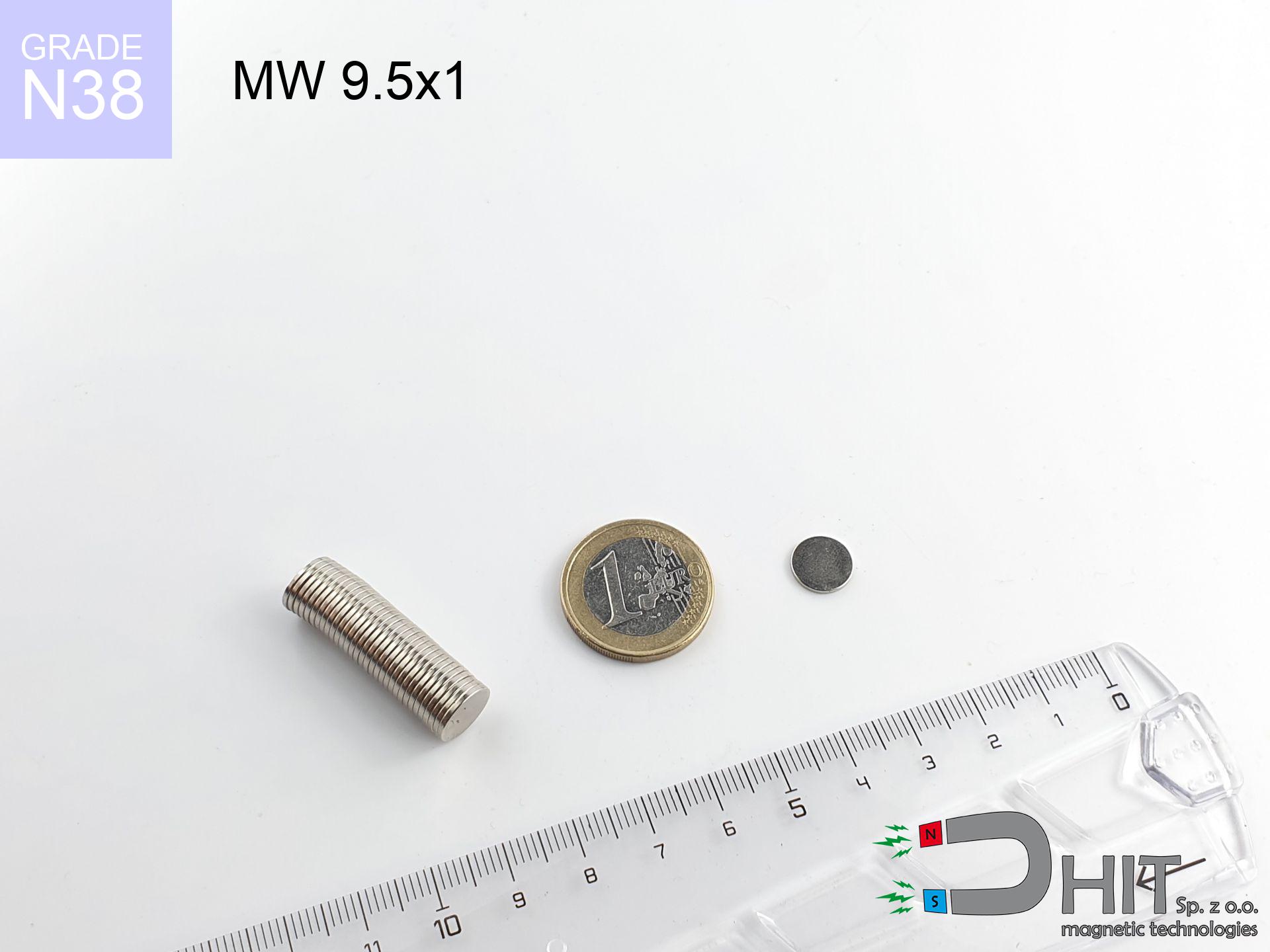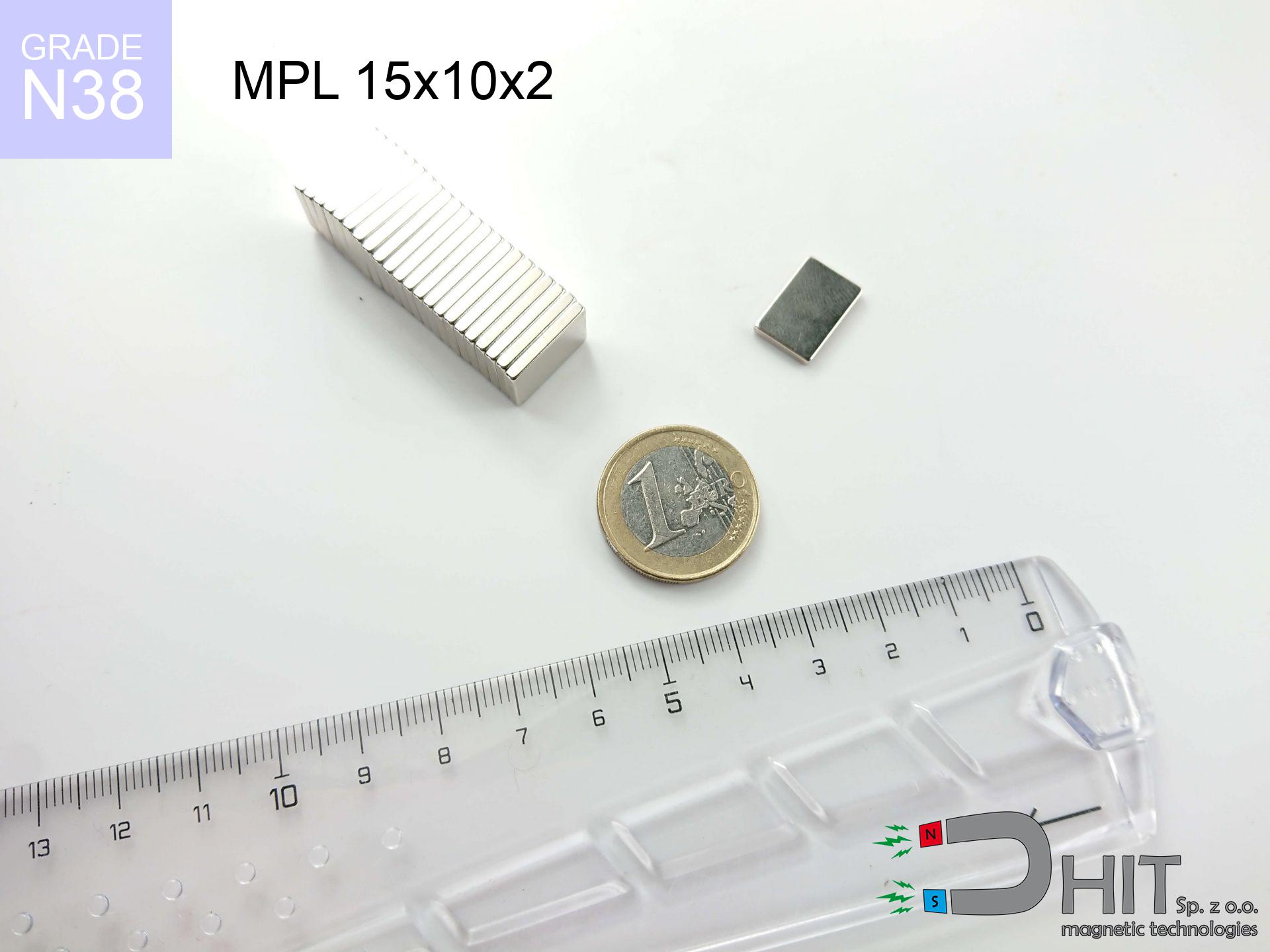UMGZ 75x34x18 [M10] GZ / N38 - magnetic holder external thread
magnetic holder external thread
Catalog no 190417
GTIN/EAN: 5906301813880
Diameter Ø
75 mm [±1 mm]
Height
34 mm [±1 mm]
Height
18 mm [±1 mm]
Weight
475 g
Load capacity
162.00 kg / 1588.68 N
189.42 ZŁ with VAT / pcs + price for transport
154.00 ZŁ net + 23% VAT / pcs
bulk discounts:
Need more?
Contact us by phone
+48 22 499 98 98
or send us a note using
form
through our site.
Specifications along with structure of neodymium magnets can be analyzed using our
power calculator.
Order by 14:00 and we’ll ship today!
Technical details - UMGZ 75x34x18 [M10] GZ / N38 - magnetic holder external thread
Specification / characteristics - UMGZ 75x34x18 [M10] GZ / N38 - magnetic holder external thread
| properties | values |
|---|---|
| Cat. no. | 190417 |
| GTIN/EAN | 5906301813880 |
| Production/Distribution | Dhit sp. z o.o. |
| Country of origin | Poland / China / Germany |
| Customs code | 85059029 |
| Diameter Ø | 75 mm [±1 mm] |
| Height | 34 mm [±1 mm] |
| Height | 18 mm [±1 mm] |
| Weight | 475 g |
| Load capacity ~ ? | 162.00 kg / 1588.68 N |
| Manufacturing Tolerance | ±1 mm |
Magnetic properties of material N38
| properties | values | units |
|---|---|---|
| remenance Br [min. - max.] ? | 12.2-12.6 | kGs |
| remenance Br [min. - max.] ? | 1220-1260 | mT |
| coercivity bHc ? | 10.8-11.5 | kOe |
| coercivity bHc ? | 860-915 | kA/m |
| actual internal force iHc | ≥ 12 | kOe |
| actual internal force iHc | ≥ 955 | kA/m |
| energy density [min. - max.] ? | 36-38 | BH max MGOe |
| energy density [min. - max.] ? | 287-303 | BH max KJ/m |
| max. temperature ? | ≤ 80 | °C |
Physical properties of sintered neodymium magnets Nd2Fe14B at 20°C
| properties | values | units |
|---|---|---|
| Vickers hardness | ≥550 | Hv |
| Density | ≥7.4 | g/cm3 |
| Curie Temperature TC | 312 - 380 | °C |
| Curie Temperature TF | 593 - 716 | °F |
| Specific resistance | 150 | μΩ⋅cm |
| Bending strength | 250 | MPa |
| Compressive strength | 1000~1100 | MPa |
| Thermal expansion parallel (∥) to orientation (M) | (3-4) x 10-6 | °C-1 |
| Thermal expansion perpendicular (⊥) to orientation (M) | -(1-3) x 10-6 | °C-1 |
| Young's modulus | 1.7 x 104 | kg/mm² |
Chemical composition
| iron (Fe) | 64% – 68% |
| neodymium (Nd) | 29% – 32% |
| boron (B) | 1.1% – 1.2% |
| dysprosium (Dy) | 0.5% – 2.0% |
| coating (Ni-Cu-Ni) | < 0.05% |
Sustainability
| recyclability (EoL) | 100% |
| recycled raw materials | ~10% (pre-cons) |
| carbon footprint | low / zredukowany |
| waste code (EWC) | 16 02 16 |
Other offers
Strengths and weaknesses of neodymium magnets.
Advantages
- They virtually do not lose strength, because even after 10 years the decline in efficiency is only ~1% (according to literature),
- Magnets very well resist against loss of magnetization caused by external fields,
- In other words, due to the metallic layer of nickel, the element becomes visually attractive,
- Neodymium magnets create maximum magnetic induction on a small surface, which increases force concentration,
- Thanks to resistance to high temperature, they are able to function (depending on the form) even at temperatures up to 230°C and higher...
- Possibility of custom creating as well as modifying to complex needs,
- Huge importance in modern industrial fields – they serve a role in mass storage devices, electric motors, advanced medical instruments, as well as technologically advanced constructions.
- Thanks to efficiency per cm³, small magnets offer high operating force, with minimal size,
Cons
- To avoid cracks upon strong impacts, we recommend using special steel holders. Such a solution secures the magnet and simultaneously improves its durability.
- Neodymium magnets decrease their strength under the influence of heating. As soon as 80°C is exceeded, many of them start losing their power. Therefore, we recommend our special magnets marked [AH], which maintain durability even at temperatures up to 230°C
- Magnets exposed to a humid environment can rust. Therefore when using outdoors, we recommend using waterproof magnets made of rubber, plastic or other material protecting against moisture
- We suggest cover - magnetic mount, due to difficulties in realizing nuts inside the magnet and complex forms.
- Possible danger related to microscopic parts of magnets are risky, if swallowed, which becomes key in the context of child health protection. Additionally, tiny parts of these devices are able to complicate diagnosis medical when they are in the body.
- High unit price – neodymium magnets have a higher price than other types of magnets (e.g. ferrite), which increases costs of application in large quantities
Pull force analysis
Breakaway strength of the magnet in ideal conditions – what it depends on?
- using a plate made of low-carbon steel, acting as a magnetic yoke
- whose transverse dimension equals approx. 10 mm
- characterized by smoothness
- without the slightest air gap between the magnet and steel
- during detachment in a direction perpendicular to the plane
- at temperature room level
Practical lifting capacity: influencing factors
- Distance – the presence of foreign body (rust, tape, gap) acts as an insulator, which reduces capacity rapidly (even by 50% at 0.5 mm).
- Load vector – maximum parameter is reached only during pulling at a 90° angle. The shear force of the magnet along the plate is usually many times smaller (approx. 1/5 of the lifting capacity).
- Metal thickness – thin material does not allow full use of the magnet. Part of the magnetic field penetrates through instead of generating force.
- Chemical composition of the base – mild steel gives the best results. Higher carbon content decrease magnetic permeability and holding force.
- Surface quality – the smoother and more polished the surface, the better the adhesion and stronger the hold. Unevenness acts like micro-gaps.
- Thermal environment – temperature increase results in weakening of force. It is worth remembering the thermal limit for a given model.
Lifting capacity testing was conducted on a smooth plate of suitable thickness, under perpendicular forces, in contrast under shearing force the holding force is lower. Moreover, even a small distance between the magnet and the plate decreases the lifting capacity.
H&S for magnets
Danger to the youngest
Absolutely store magnets away from children. Ingestion danger is significant, and the effects of magnets clamping inside the body are tragic.
Phone sensors
A strong magnetic field negatively affects the operation of magnetometers in phones and GPS navigation. Maintain magnets close to a device to prevent damaging the sensors.
Caution required
Handle magnets consciously. Their huge power can surprise even professionals. Stay alert and do not underestimate their power.
Magnetic media
Intense magnetic fields can erase data on credit cards, HDDs, and other magnetic media. Maintain a gap of at least 10 cm.
Hand protection
Large magnets can break fingers in a fraction of a second. Never place your hand between two strong magnets.
Life threat
Patients with a ICD should maintain an large gap from magnets. The magnetic field can disrupt the operation of the life-saving device.
Permanent damage
Standard neodymium magnets (grade N) lose power when the temperature exceeds 80°C. This process is irreversible.
Sensitization to coating
Nickel alert: The nickel-copper-nickel coating contains nickel. If redness happens, immediately stop handling magnets and use protective gear.
Machining danger
Combustion risk: Rare earth powder is explosive. Avoid machining magnets in home conditions as this risks ignition.
Shattering risk
Despite metallic appearance, the material is brittle and cannot withstand shocks. Avoid impacts, as the magnet may shatter into hazardous fragments.

![Magnet with screw UMGZ 75x34x18 [M10] GZ / N38 Magnet with screw UMGZ 75x34x18 [M10] GZ / N38](https://cdn3.dhit.pl/graphics/banners/magnet.webp)
![UMGZ 75x34x18 [M10] GZ / N38 - magnetic holder external thread](https://cdn3.dhit.pl/graphics/products/umgw-75x34x18-m10-gz-xid.jpg)
![UMGZ 75x34x18 [M10] GZ / N38 - magnetic holder external thread - ujęcie 2](https://cdn3.dhit.pl/graphics/products/umgw-75x34x18-m10-gz-fos.jpg)


![UMH 75x18x68 [M8] / N38 - magnetic holder with hook UMH 75x18x68 [M8] / N38 - magnetic holder with hook](https://cdn3.dhit.pl/graphics/products/umh-75x18x68-m8-wag.jpg)
![SM 32x225 [2xM8] / N42 - magnetic separator SM 32x225 [2xM8] / N42 - magnetic separator](https://cdn3.dhit.pl/graphics/products/sm-32x225-2xm8-dob.jpg)

